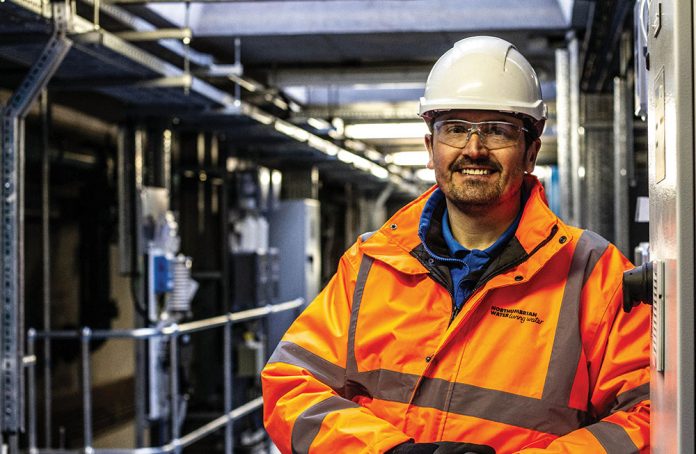Utraviolet technology is making drinking water even cleaner for over one million people in the North East.
Northumbrian Water has invested £1.9m in the installation of the disinfection system at its water treatment works at Lumley, in County Durham.
The power of the ultraviolet lights has been added to the existing layers of cleaning processes already in place at Lumley Water Treatment Works (WTW), which include filtration and chlorination.
The system, developed in partnership with water technology experts Evoqua, takes the method of using UV light for cleaning swimming pools and adapts it for drinking water.
It has been fitted in the industry best practice placement of the giant filters and the project has been shortlisted for a prestigious Robert Stephenson Award by the Institution of Civil Engineers (ICE) North East.
Lumley WTW treats up to 45 million litres of water a day for 240,000 customers across the East Durham, Teesside and Wearside areas.
The Lumley installation follows a successful trial at the company’s Mosswood Water Treatment Works (WTW) on the border of County Durham and Northumberland. Mosswood WTW supplies around 800,000 customers across County Durham, South Tyneside, Washington, and parts of Sunderland and North Tyneside.
David McDonagh, Project Manager at Northumbrian Water, said: “The quality of the water we supply to our customers is vitally important. We always strive to deliver clean, clear and great-tasting water to the highest standards possible, and the developments in technology that we have delivered in partnership with Evoqua mean we can now go even further.
“It’s fantastic to see the project recognised by the Institution of Civil Engineers because it really does reflect the innovation that has allowed us to take this exciting step forward in quality.”
Water Supply Manager David Bruce added: “This raises the bar on what we can deliver for our customers in terms of water quality standards. We’ve used ultraviolet treatment at wastewater treatment works and at groundwater borehole drinking stations, but the ability to use it as an added layer of water treatment at a scale such as this is fantastic for customers.”



